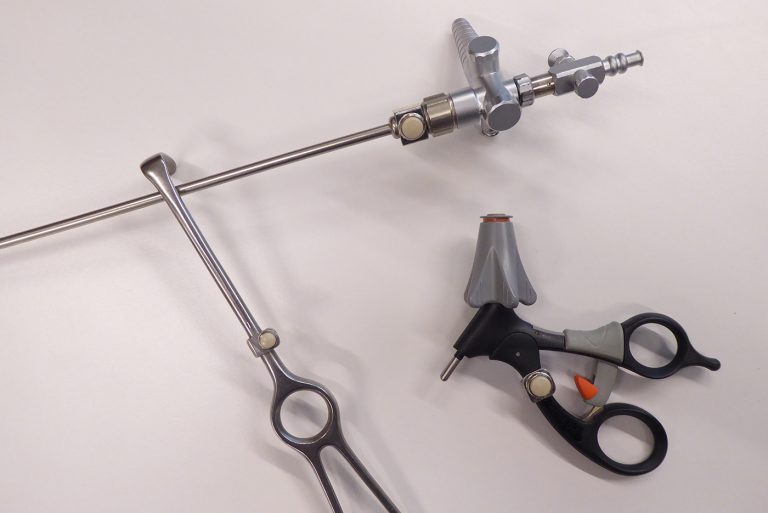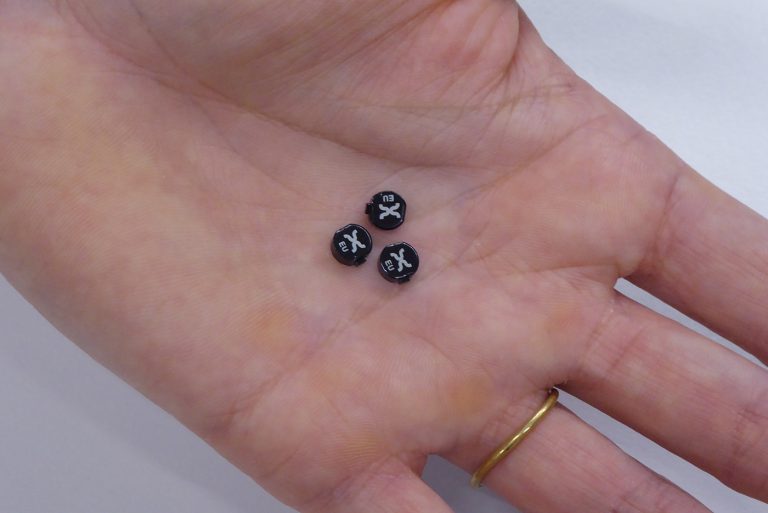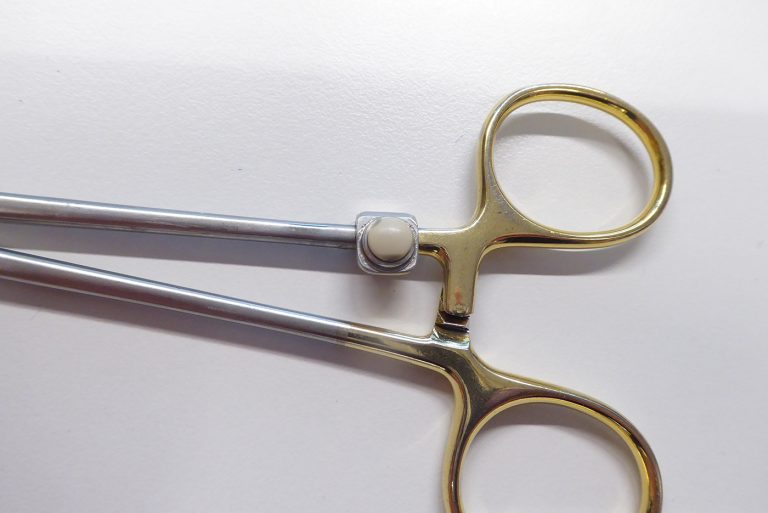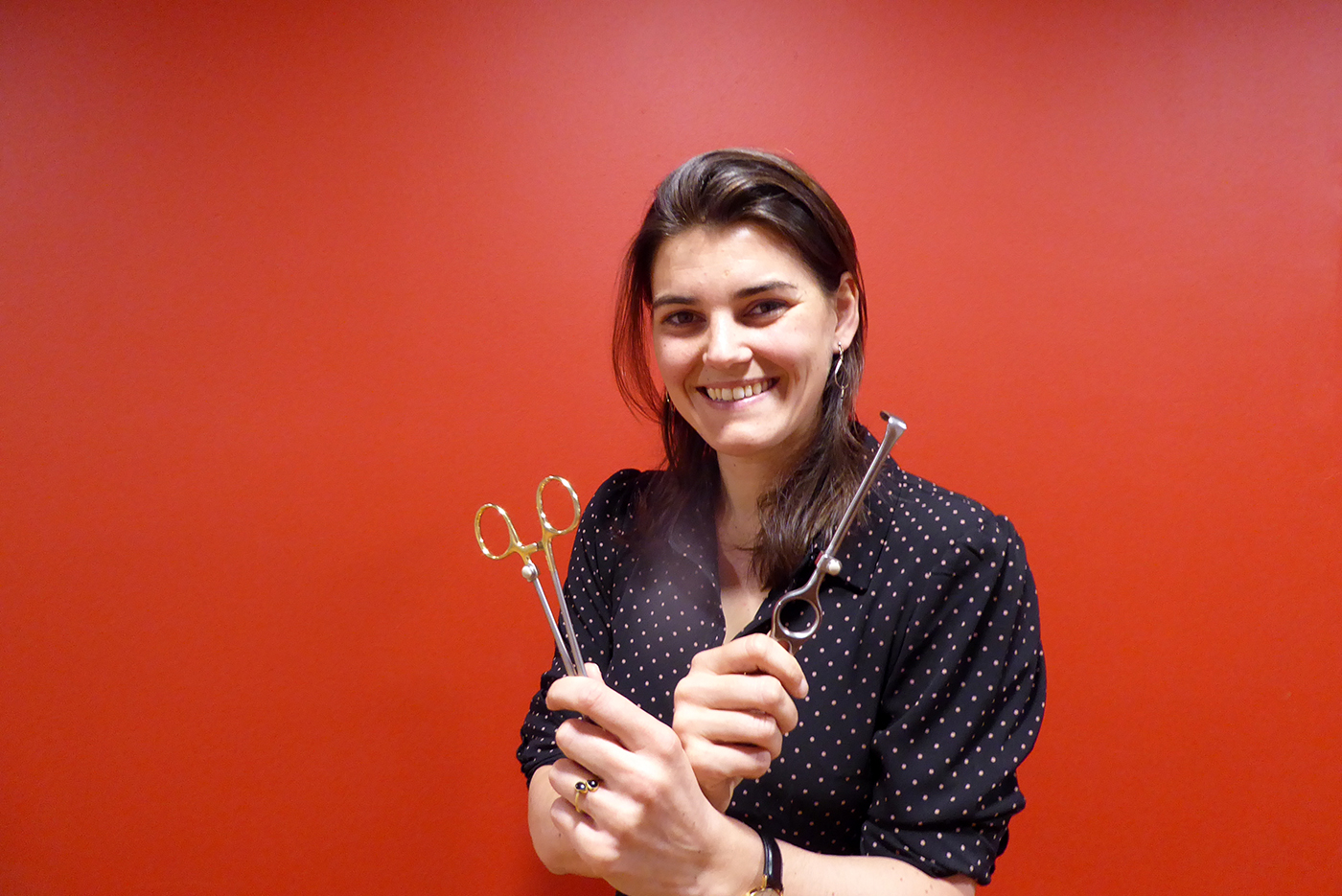After 10 years of preparation, everything came together when tagged instruments were used in a real operation for the first time last February.
Medical doctor and PhD student Frédérique Meeuwsen had orchestrated the first clinical trial of radio frequency identification (RFID) tagged surgical instruments for two years. Among the parties involved were the research group medical instruments & bio-inspired technology (Faculty of 3mE), the surgical research team from the Reinier de Graaf hospital, and Van Straten Medical, supplier of surgical instruments.
 Tagged instruments. (Photo: Jos Wassink)
Tagged instruments. (Photo: Jos Wassink)The idea was to use surgical instruments that were tagged with RFID in a real operation room during an actual surgical procedure (the laparoscopic repair of a inguinal rupture).
It was the first time the feasibility of tagging and following surgical instruments during an operation was demonstrated. The hospital’s Board had to agree to the test, just as the medical ethical committee and the sterilisation services.
“Just one week before my contract ended, all the pieces fell into place,” said Meeuwsen afterwards. With her medical background and her PhD research in the TU Delft department of biomechanical engineering, she was well placed to get all parties, medical and technical, aligned. “I felt like a spider in a web,” she says. “I really enjoyed the freedom and the independency they gave me.”
Research on improving operation room workflow efficiency has a long history. Associate Professor Dr John van den Dobbelsteen sees tracking surgical instruments as part of a digital system called Safe Surgical Signature.
Seven years ago, only large instruments or racks could be fitted with RFID tags, which were the size of pillboxes then. Smaller instruments were labelled with plastic coloured rings or bar codes.
 RFID chips keep getting smaller. (Photo: Jos Wassink)
RFID chips keep getting smaller. (Photo: Jos Wassink)Now the chips alone are smaller than 1 mm2, but even in their protective coating they’re smaller than a pill. Their diminutive size allows them to be fixed onto each individual surgical instrument to tag it.
 RFID chip in fixing. (Photo: Jos Wassink)
RFID chip in fixing. (Photo: Jos Wassink)Master student Jeroen Koffeman has designed some steel fixings for chips on various instruments, which had to be sturdy enough to survive the sterilisation processes. Van Straten Medical then manufactured a complete set.
During the operation, RFID antennas, which were fixed onto poles beside the patient, signalled various tagged tools taken into or out of the operation area.
One of the ideas behind Safe Surgical Signature is that automatic registration of surgical tools can signal the end of the operation (when the stitches go in, for example). Personnel outside the room can be alerted that they can prepare the next patient.
Safe Surgical Signature could also be used to automatically check if all the required instruments for the upcoming operation are present.
Tool manufacturer Van Straten sees yet another application. The system could keep track of how many times an instrument is used. Such information can be used in automatic planning for maintenance or replacement.
Despite the promising advantages, RFID tags will not be used in standard operations in the Delft hospital. The demo was a successful proof of concept and another step towards Van den Dobbelsteen’s digital operation theatre of the future.
- Frédérique Meeuwsen, Safe Surgical Signatures, PhD supervisors Prof. Jenny Dankelman en dr. John van den Dobbelsteen, 29 mei 2019, 12:00 Senaatszaal Aula
Do you have a question or comment about this article?
j.w.wassink@tudelft.nl


Comments are closed.